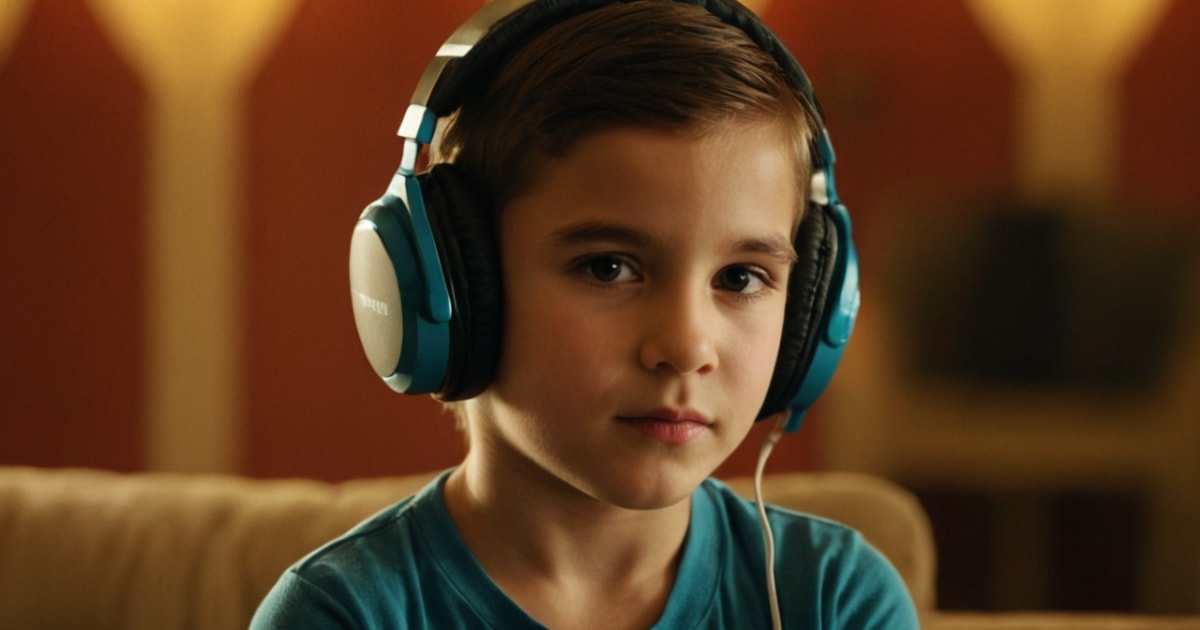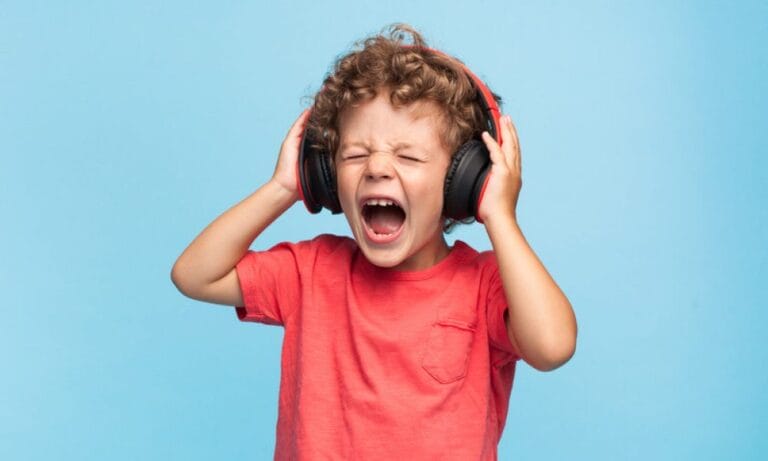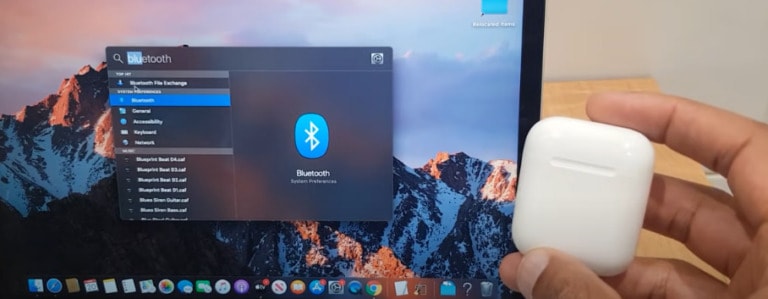
Is It Advisable for Kids to Use Noise-cancelling Headphones? Let’s dive in and find out! You may have seen people using these fancy headphones that block out all the noise around them, but are they suitable for kids? Well, that’s what we’re here to discuss. So, buckle up, and let’s explore the pros and cons of noise-cancelling headphones for our young ones.
As technology continues to advance, noise-cancelling headphones have become more accessible. But the big question remains: should kids be using them? Here’s the deal. On one hand, noise-canceling headphones can be a lifesaver in loud environments, helping kids focus and concentrate better. But, on the other hand, there are a few factors to consider before handing them over to your little ones.
Now, let’s weigh the pros and cons and make an informed decision regarding those noise-canceling headphones for our kiddos.
Are Noise-Cancelling Headphones Suitable for Kids?
Noise-cancelling headphones can be a great option for kids, but there are some factors to consider. Firstly, make sure the headphones are properly sized and fit comfortably. Secondly, keep an eye on the volume levels to protect their hearing. Additionally, it’s important to monitor the duration of use and encourage breaks.
Overall, noise-cancelling headphones can help kids focus and reduce distractions, but responsible usage and parental supervision are key.
Is It Advisable for Kids to Use Noise-cancelling Headphones?
Introduction: In today’s noisy world, headphones have become a popular accessory. Noise-canceling headphones, in particular, have gained significant attention for their ability to block out unwanted sounds.
However, when it comes to kids using noise-canceling headphones, concerns arise regarding their safety and potential impact on hearing development. In this article, we will delve into the topic and explore whether kids should use noise-cancelling headphones.
Noise-cancelling Headphones Explained
First and foremost, let’s understand what noise-cancelling headphones are. Noise-canceling headphones are designed to reduce external noise by producing frequencies that cancel out incoming sounds.
They achieve this through two main types of noise-cancelling technology: passive and active. Passive noise-canceling relies on the physical design of the headphones to block out noise, while active noise-canceling uses microphones and circuitry to analyze and counteract incoming sounds.
For children, noise-canceling headphones can offer certain benefits. They can be particularly useful in loud environments, such as airplanes or busy city streets, where excessive noise can cause stress or discomfort. By effectively reducing ambient noise, noise-cancelling headphones can provide a more peaceful and focused listening experience for children.
However, it is essential to consider the potential drawbacks and limitations of noise-cancelling headphones for kids. The long-term effects of prolonged use of noise-cancelling headphones on hearing development in children are not yet fully understood.
Additionally, noise-cancelling headphones can create a sense of isolation, as they block out external sounds entirely. This may interfere with a child’s ability to interact with their environment and engage in social interactions.
Safety of Kids Using Noise-cancelling Headphones
When it comes to the safety of kids using noise-canceling headphones, it is crucial to consider several factors. Firstly, the volume at which children listen to audio through their headphones should always be monitored and kept at a safe level. Prolonged exposure to high volumes can lead to hearing damage, regardless of whether noise-canceling technology is being utilized.
Additionally, the fit and comfort of noise-cancelling headphones for children are crucial. Ill-fitting headphones can lead to discomfort or even physical harm, such as pressure on the ears or headaches. It is important to choose noise-canceling headphones that are specifically designed for kids, with adjustable headbands and cushioned ear cups to ensure a secure and comfortable fit.
Furthermore, parents should consider the overall exposure to noise that their children experience daily. If noise-canceling headphones are used excessively, it may prevent children from developing the necessary coping mechanisms for dealing with everyday noise. Balancing the usage of noise-canceling headphones with regular exposure to ambient sounds is essential for their overall auditory development.
Noise-cancelling Headphones vs. Traditional Headphones
One common comparison made is between noise-cancelling headphones and traditional headphones for kids. Traditional headphones, without the noise-canceling feature, allow ambient sounds to be heard alongside the audio being played. While this can help maintain situational awareness, it may also result in distractions or a less immersive listening experience.
Noise-canceling headphones, on the other hand, give children the ability to completely block out external noise. This can be advantageous in certain situations, such as studying in a noisy environment or when sensitive to loud sounds. However, as mentioned earlier, this isolation may also hinder a child’s awareness of their surroundings and their ability to interact with others.
The choice between noise-canceling headphones and traditional headphones for kids ultimately depends on the specific needs and circumstances. Parents need to consider factors such as the child’s environment, listening habits, comfort, and overall safety when making a decision.
Benefits of Kids Using Noise-cancelling Headphones
Introduction: While there are certain considerations and potential drawbacks to be aware of, noise-canceling headphones can also offer significant benefits for kids. In this section, we will explore some of the advantages of children using noise-cancelling headphones.
Enhanced Focus and Reduced Distractions
One of the primary benefits of noise-cancelling headphones for kids is their ability to enhance focus and reduce distractions. In environments where there is constant background noise, such as classrooms or public transportation, noise-canceling headphones can help children concentrate on their tasks or studies without being constantly disrupted by external sounds.
By creating a more peaceful and controlled auditory environment, noise-canceling headphones can improve a child’s ability to pay attention, retain information, and engage in tasks that require concentration, such as reading or completing homework assignments. This can ultimately contribute to increased productivity and better learning outcomes.
It is important to note, however, that noise-canceling headphones should be used judiciously and not become a crutch for avoiding situations where a child needs to learn how to manage and adapt to ambient sounds. Striking the right balance between using noise-canceling headphones for focus and allowing exposure to real-world noise is key.
Frequently Asked Questions
Welcome to our FAQ section, where we answer some common questions about kids using noise-cancelling headphones. We understand that parents may have concerns, so we’re here to provide you with information and insights on this topic. Read on to find answers to some of your questions!
1. Are noise-cancelling headphones safe for kids?
Yes, noise-canceling headphones are generally safe for kids to use. These headphones work by using special technology to reduce external noise, allowing users to enjoy their music or audio at lower volumes. By reducing the need to turn up the volume, noise-cancelling headphones can help protect your child’s hearing.
However, it is important to choose the right pair of noise-cancelling headphones for your child. Look for headphones with volume-limiting features to ensure that the sound doesn’t exceed safe levels. Additionally, make sure the headphones fit properly and comfortably, as extended use of ill-fitting headphones may cause discomfort or potential harm.
2. At what age can children start using noise-cancelling headphones?
There is no specific age limit for children to start using noise-canceling headphones, as it largely depends on the individual child’s needs and maturity. Some children may be ready to use them at a younger age, while others may not be ready until they are older.
When considering whether your child is ready, it’s important to consider their ability to handle and use headphones responsibly. If your child understands how to adjust volume levels appropriately, takes breaks from using headphones, and follows any guidelines and instructions provided, they may be ready to start using noise-cancelling headphones.
3. Can noise-cancelling headphones affect my child’s communication skills?
Noise-cancelling headphones, when used in moderation, are unlikely to have a significant impact on your child’s communication skills. While it’s true that excessive use of headphones, including noise-cancelling ones, can lead to isolation and decreased social interaction, this is more related to overall screen time and lack of face-to-face communication with others.
Encourage your child to balance their use of headphones with other activities that promote social interaction. Set limits on screen time and encourage them to engage in conversations with family and friends. When used responsibly, noise-cancelling headphones should not hinder your child’s communication skills.
4. Should I be concerned about the potential for hearing damage with noise-cancelling headphones?
Noise-cancelling headphones, when used correctly, should not pose a significant risk of hearing damage. In fact, they can actually help protect your child’s hearing by allowing them to listen to audio at lower volumes.
However, you must choose noise-cancelling headphones that have a volume-limiting feature. This ensures that the sound does not exceed safe levels for your child’s ears. Additionally, encourage your child to take breaks from using headphones and remind them to listen at reasonable volume levels to further reduce any potential risk.
5. Are there any alternatives to noise-cancelling headphones for kids?
Yes, if you have concerns about noise-cancelling headphones, there are alternatives you can consider. One option is to use over-ear headphones with good noise isolation, which can effectively block out external sounds without the need for active noise-cancelling technology.
Another alternative is to use noise-reducing earmuffs, which provide passive noise reduction. These earmuffs are often used in loud environments, such as concerts or construction sites, but they can also be used by children who require noise reduction for various reasons. Always ensure that any headphones or earmuffs you choose are age-appropriate and provide a safe listening experience.
Using noise-cancelling headphones can be okay for kids, but there are some things to consider. It’s essential to choose headphones with volume control to protect their hearing. Kids should also take breaks, as long exposure to loud music can be harmful.
Noise-canceling headphones may help with concentration and reduce distractions, but they shouldn’t be used all the time. It’s important to balance headphone usage with other activities and maintain a healthy level of social interaction. Ultimately, parents should be involved and guide their kids in using headphones responsibly.
In conclusion, while noise-cancelling headphones can have benefits for kids, moderation and proper usage are key. Parents should prioritize their child’s hearing health and encourage breaks from headphone use. By understanding the potential risks and taking precautions, kids can enjoy the advantages of noise-canceling headphones responsibly and safely.






